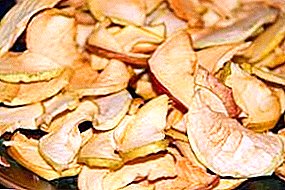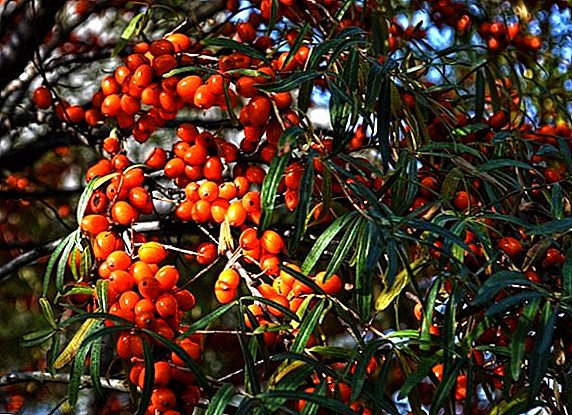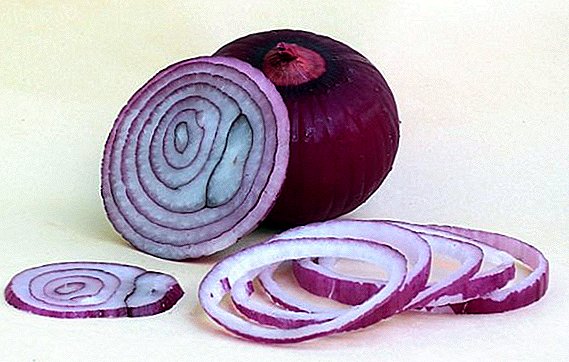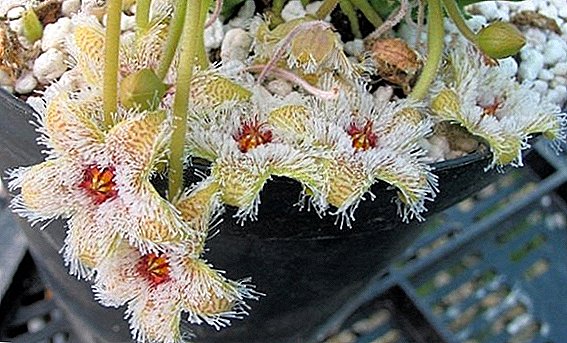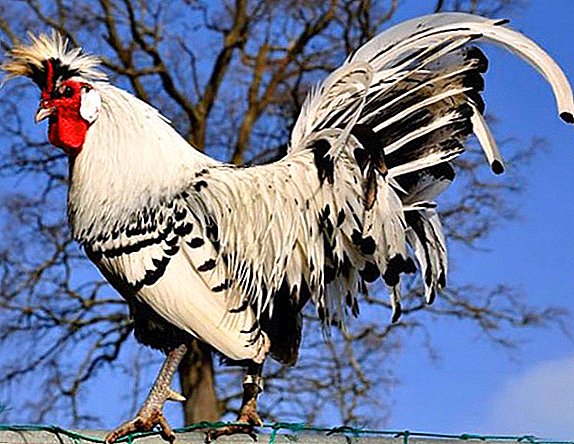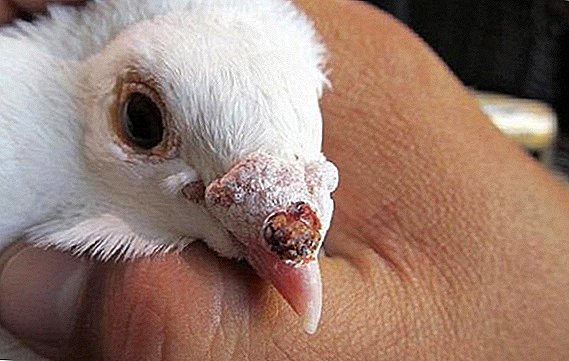 Zooanthroponosis is a disease peculiar to both humans and animals. If the previously identified ailments could happen only in a certain type of animal, then today more and more often there are cases of animal diseases with “human” diseases.
Zooanthroponosis is a disease peculiar to both humans and animals. If the previously identified ailments could happen only in a certain type of animal, then today more and more often there are cases of animal diseases with “human” diseases.
One of such zoo-anthroponotic diseases is smallpox, an acute infectious disease characterized by purulent rashes and skin lesions. In this article we will look at how to treat smallpox in pigeons, what forms this disease acquires in birds, and what preventive measures exist.
Pigeon pox: what is it?
Pigeon pox is a viral disease that is widespread in almost all continents and affects mainly young birds. There are two types: skin and diphtheria. As a rule, the first degree of skin smallpox in pigeons is well treated, and the ill pigeons who have been ill acquire lifelong immunity.  Diphtheric pox is more dangerous: it quickly spreads among healthy individuals and affects the nasal mucosa (the bird begins to experience problems with oxygen access and may die without timely help). Both types of smallpox occur due to the presence of a certain environment and some provoking factors. Namely:
Diphtheric pox is more dangerous: it quickly spreads among healthy individuals and affects the nasal mucosa (the bird begins to experience problems with oxygen access and may die without timely help). Both types of smallpox occur due to the presence of a certain environment and some provoking factors. Namely:
- communicating with infected birds;
- humid air in the dovecote, dampness, drafts and the presence of mold;
- polluted pigeon feeder and inventory;
- excessively hot air or, conversely, too cold;
- lack of vitamins;
- increased resistance of the inner shell of the nose to the penetration of the virus;
- lack of food;
- excessive loss of plumage during molting;
- polluted water, etc.
Important! Despite the fact that smallpox mainly affects young birds, adults are carriers of the disease - they can keep the virus in their bodies for up to two months, while these birds will not have external signs of smallpox. Adult infected birds can pass infection to young animals through droppings, mucous secretions and through water (when drinking water from the same drinker).Sometimes smallpox can be transmitted from a sick pigeon to a healthy one through ticks, bloodsucker flies and other insects - however, this way of transmission of the virus happens in nature much less often.
Forms of the disease
There are two main types of this acute progressive disease, which differ in the type of infection of the bird - skin and diphtheria. The first, mainly, adult bird is sick, especially during mating: at this time the pigeons' contact with each other increases, and through the small wounds inflicted by the males on each other by the beak, the infection in the flock is transmitted more quickly. Diphtheric type of smallpox youngsters are charged from adults, mainly while feeding their young with a dove. Let us consider in more detail the distinctive features of each form and the appearance of smallpox.
Skin (smallpox)
This type is characterized by the appearance on the skin around the nose, in the ear apertures, and also in the corners of the mouth cavity of small red sores - ospinok, which subsequently form large purple growths.  In a more severe form of flow, the disease affects not only the skin, but also the tissues of the internal organs, which leads to the death of the bird. Often, smallpox affects the eye mucosa - in this case there is photophobia, excessive tearing, inflammation and redness of the eyes, purulent discharge, the appearance of warty growths in the corners of the eyes.
In a more severe form of flow, the disease affects not only the skin, but also the tissues of the internal organs, which leads to the death of the bird. Often, smallpox affects the eye mucosa - in this case there is photophobia, excessive tearing, inflammation and redness of the eyes, purulent discharge, the appearance of warty growths in the corners of the eyes.
With the defeat of smallpox pigeons become lethargic, drowsy, their appetite worsens, and the wings almost always go down. The incubation period of skin smallpox in the summer is 1-2 months (this is the time of activity of the virus, which is able to infect every healthy bird), and in the winter time - 3-4 months (the cold has a positive effect on the virus, "preserves" it and prolongs activity).
Did you know? In total, there are about 300 species of pigeons - these birds live in almost every corner of the globe (except for extremely cold regions). More than 30 cities of the planet have monuments of this “bird of the world”.
Diphtheric
Signs of diphtheric smallpox are smallpox inside the nose, larynx, and goiter. Sometimes, in addition to growths, the nasal mucosa tightens a dense film of yellowish color. Smallpox corks impede the breathing of pigeons — infected birds emit wheezes, groans, and also have great difficulty in eating and drinking. This type of ailment is often called the "yellow cork": it is noteworthy that the form of diphtheria pox is often of the chronic type.  Sometimes a mixed type of smallpox is also encountered - when an infected pigeon shows signs of both skin and diphtheria. This is the most severe form of the disease, often leading to death: in addition to problems with oxygen access and the inability to eat, the external skin (and often internal organs) of the pigeon is covered with a solid pox film, on which rotting growths form. In the presence of at least one sign of a smallpox disease in a pigeon or an obvious change in its type of behavior (as well as in case of refusal of food, uncharacteristic loss of feathers, etc.), you should immediately quarantine the sick bird and begin treatment.
Sometimes a mixed type of smallpox is also encountered - when an infected pigeon shows signs of both skin and diphtheria. This is the most severe form of the disease, often leading to death: in addition to problems with oxygen access and the inability to eat, the external skin (and often internal organs) of the pigeon is covered with a solid pox film, on which rotting growths form. In the presence of at least one sign of a smallpox disease in a pigeon or an obvious change in its type of behavior (as well as in case of refusal of food, uncharacteristic loss of feathers, etc.), you should immediately quarantine the sick bird and begin treatment.
Important! Sometimes "yellow cork" in young pigeons may be formed due to trichomoniasis, and not diphtheria. An accurate diagnosis can be obtained by consulting a veterinarian and passing certain tests.
How to treat smallpox in pigeons
Treatment of a sick pigeon is a rather long process. In order to successfully cure smallpox, it will be necessary, first of all, to examine the veterinarian and determine the stage of the poultry disease. If the stage is late, and the disease is progressive and acute, then such a bird will most likely have to be killed and burned (the dead bird is still a source of smallpox virus, and only fire destroys the virus 100%).  In other cases, effective treatment will be required, which includes not only the introduction of certain medical preparations to the bird, but also some actions aimed at external cleaning of the skin, disinfection of the mucous eyes and nose. It is important to remember that the effectiveness of therapy will depend on how quickly treatment was started - in the late stage of the disease, the smallpox therapy will be effective only in 15% of cases.
In other cases, effective treatment will be required, which includes not only the introduction of certain medical preparations to the bird, but also some actions aimed at external cleaning of the skin, disinfection of the mucous eyes and nose. It is important to remember that the effectiveness of therapy will depend on how quickly treatment was started - in the late stage of the disease, the smallpox therapy will be effective only in 15% of cases.
Antibiotics
For the treatment of smallpox, antibiotics are used only as a radical remedy - in case standard disinfection and disinfection procedures no longer work. The course of antibiotic therapy lasts from 5 to 9 days, while parallel to the pigeons are fed vitamin supplements (antibiotics greatly reduce immunity). Drugs are injected both subcutaneously (in the neck) and intramuscularly (in the region of the pectoral muscles). Sometimes antibiotics are dissolved in water and poured in portions into the beak of each dove.
Read how to cure chickenpox and coccidiosis in pigeons.
The following antibiotics are used to treat smallpox in pigeons:
- "Tetracycline". The drug is for external use, broad-spectrum. Fights bacterial infections of various types, effectively eliminates the smallpox virus from the mucous membranes of the eyes and nose of the pigeon. It is produced in the form of drops, ointment and tablets. To eliminate the "yellow cork" the drug is diluted in water (in a ratio of 1: 4) and three times a day the sick pigeon is instilled into the eyes and beak. Tetracycline tablets are crushed and rolled into bread crumbs, which make the pigeon eat - this helps to eliminate the smallpox virus from the internal organs of the bird. The daily rate of "Tetracycline", which is taken orally (orally or by injection), for a young pigeon should not exceed 50 mg - therefore, treatment with such an antibiotic occurs, as a rule, either orally or externally. Especially effective is a mixture of "tetracycline" with vitamins B12, A and D2. Tetracycline ointment also treats the affected smallpox skin. The course of treatment with this antibiotic is from 5 to 8 days.
- "Tilan". Antibacterial powdered water-soluble agent that is used to treat poultry, as well as small and large livestock. For the treatment of smallpox pigeons give "Tilan" at the rate of 0.5 g of powder per 1 liter of drinking water. The daily amount of this solution per 1 pigeon should not exceed 40-50 ml, therefore, as a rule, the dissolved "Tilan" is instilled into the bird in the beak with a pipette. Such an antibiotic not only successfully removes congestion and inflammation in the beak, but also disinfects the internal organs. The standard course of treatment is 5 days, the maximum period of use of this antibiotic is up to 8 days.
- "Enrofloxacin". A broad-spectrum antibiotic that effectively fights coccoid bacteria and bacterial diseases. "Enrofloxacin" is used mainly for oral treatment - the antibiotic is diluted in water (5 ml per 10 l of water), poured into a drinker and given to infected pigeons instead of regular drinking water. The course of treatment lasts up to 6 days. This antibiotic has a negative effect on the kidneys of birds, therefore, in the presence of renal failure or any other diseases of this organ, Enrofloxacin cannot be used.
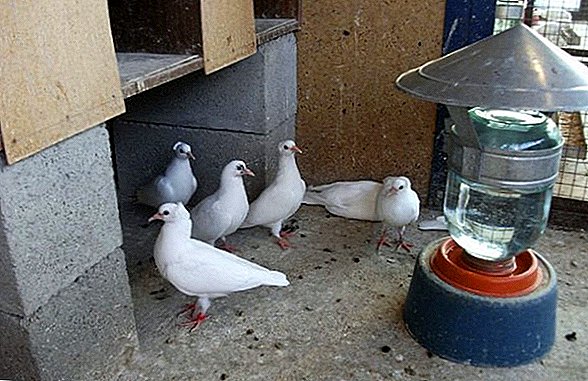

For the prevention of salmonellosis and Newcastle's disease in pigeons, the drug Virosalm is used.
Vaccination
Vaccination is still the best way to prevent smallpox. Young pigeons up to one year old should be vaccinated between 8 and 11 weeks of age. The injection is carried out in the wing membrane or in the skin fold of the foot. The best means for vaccination are the following:
- Diftopharm. Live vaccine produced in Slovakia. Contains a small amount of smallpox virus, which, when ingested by a pigeon, stimulates immunity to the production of antibodies, which subsequently can prevent the attack of a dangerous smallpox virus. Inoculation with this drug occurs only once in the bird's life, it is also possible to vaccinate a bird that has already recovered (in order to avoid relapse). This vaccine consists of dry matter contained in a sealed vial, and a special solvent. Directly injection solution is created by dissolving the dry component of the drug in the liquid composition. Detailed instructions for use are included in the product packaging. This vaccine is traditionally injected into the wing membrane of a pigeon that has reached at least 6 weeks of age, and only a healthy pigeon is being vaccinated.
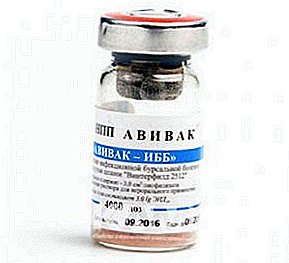 Avivak. Smallpox vaccine consisting of a dry culture component and a special diluent Strain "K" (solution of glycerol and phosphate). Vaccination can be carried out to a bird older than 2 months - in such pigeons immunity will remain throughout life. The recommended dose for injection is 0.013-0.015 cu. see. The reaction to this vaccine may come on 5-8 days after vaccination - small ulcers (small pox) will appear on the wing and back of the pigeon, which will pass in 25-30 days.
Avivak. Smallpox vaccine consisting of a dry culture component and a special diluent Strain "K" (solution of glycerol and phosphate). Vaccination can be carried out to a bird older than 2 months - in such pigeons immunity will remain throughout life. The recommended dose for injection is 0.013-0.015 cu. see. The reaction to this vaccine may come on 5-8 days after vaccination - small ulcers (small pox) will appear on the wing and back of the pigeon, which will pass in 25-30 days.- Columba This vaccine, unlike the previous two, consists of an oily liquid that is completely ready for use. Vaccination can be carried out on young pigeons who have reached 4 weeks of age. The dose per bird is 0.3 ml of liquid, which is introduced subcutaneously (in the skin fold of the foot). The reaction to the drug will appear in 14 days. Vaccination with this drug can be one-time or annual (every 13 months). This vaccine is completely safe and only in rare cases causes a small side effect (the appearance of a pea at the injection site, which disappears after 4-6 days).
Find out what diseases pigeons can be dangerous to humans, and what medicines are recommended to use for the treatment of these birds.
Improvised means
In addition to antibiotic therapy, for the treatment of smallpox virus, you can use improvised means. These include:
- Cleansing boric solution. The affected skin is treated with a sterile swab moistened with a solution of boric acid (2%). If hard crusts have already appeared on the skin, after boron treatment, they should be gently removed with a lyapisny pencil (or other similar antiseptic preparation).
- "Lozeval". Antifungal drug that successfully eliminates smallpox rashes. This preparation is used to treat the skin and feathers of a sick pigeon, after which after half an hour the treated areas of skin can be further smeared with tetracycline ointment.
 Iodine. An excellent tool for dealing with a dense crust of smallpox rashes. A cotton stick moistened with iodine gently burns the sores on the skin of the bird, and after that the treated areas are smeared with a moisturizing cream. In addition, iodine can be used for processing pigeon and equipment located in it. With water in which iodine is diluted (1:10 ratio), all the surfaces of the pigeon are sprayed. For the bird itself, such a procedure is absolutely harmless.
Iodine. An excellent tool for dealing with a dense crust of smallpox rashes. A cotton stick moistened with iodine gently burns the sores on the skin of the bird, and after that the treated areas are smeared with a moisturizing cream. In addition, iodine can be used for processing pigeon and equipment located in it. With water in which iodine is diluted (1:10 ratio), all the surfaces of the pigeon are sprayed. For the bird itself, such a procedure is absolutely harmless.- Disinfection with potassium permanganate drinking water. It is used when the antibiotic is not dissolved in water. Disinfection of drinking water occurs by dissolving in it a weak solution of potassium permanganate. Such treated water is placed in a drinker - this prevents the spread of the virus in the loft. In the same way, water can be disinfected using iodoline, chloramine or furatsilina.
We recommend to learn how to make dovecote, nests, feeders and drinkers for pigeons with your own hands.
Preventive measures
In order to avoid the risk of the appearance of a smallpox virus in pigeons, a number of preventive measures are used. These include:
- timely disinfection of pigeon-house with iodine or blue vitriol solution (every 2-3 months);
- provision of a balanced and fortified diet (periodically add sunflower oil or fish oil to feed);
- fight against insects, besieging dovecote (mites, flies, etc.);
- timely disinfection of water (at least once a month to give drink water with a solution of potassium permanganate);
- thorough sanitary cleaning of the dovecote, cleaning of the feeders and drinkers with antibacterial agents;
- periodic treatment of the skin and feathers of birds with antiseptic ointments;
- vaccination;
- placing new birds (newborns or purchased ones) separately from the main flock will help identify sick birds.
 Smallpox is a dangerous viral disease that often affects both domestic and wild pigeons. The key to successful poultry treatment is not only timely therapy and anti-bacterial treatment of the pigeon house, but also timely vaccination and preventive measures. Do not forget to vaccinate and re-acquire birds to temporary quarantine - this will help prevent the spread of a possible virus among healthy birds.
Smallpox is a dangerous viral disease that often affects both domestic and wild pigeons. The key to successful poultry treatment is not only timely therapy and anti-bacterial treatment of the pigeon house, but also timely vaccination and preventive measures. Do not forget to vaccinate and re-acquire birds to temporary quarantine - this will help prevent the spread of a possible virus among healthy birds.


 Avivak. Smallpox vaccine consisting of a dry culture component and a special diluent Strain "K" (solution of glycerol and phosphate). Vaccination can be carried out to a bird older than 2 months - in such pigeons immunity will remain throughout life. The recommended dose for injection is 0.013-0.015 cu. see. The reaction to this vaccine may come on 5-8 days after vaccination - small ulcers (small pox) will appear on the wing and back of the pigeon, which will pass in 25-30 days.
Avivak. Smallpox vaccine consisting of a dry culture component and a special diluent Strain "K" (solution of glycerol and phosphate). Vaccination can be carried out to a bird older than 2 months - in such pigeons immunity will remain throughout life. The recommended dose for injection is 0.013-0.015 cu. see. The reaction to this vaccine may come on 5-8 days after vaccination - small ulcers (small pox) will appear on the wing and back of the pigeon, which will pass in 25-30 days. Iodine. An excellent tool for dealing with a dense crust of smallpox rashes. A cotton stick moistened with iodine gently burns the sores on the skin of the bird, and after that the treated areas are smeared with a moisturizing cream. In addition, iodine can be used for processing pigeon and equipment located in it. With water in which iodine is diluted (1:10 ratio), all the surfaces of the pigeon are sprayed. For the bird itself, such a procedure is absolutely harmless.
Iodine. An excellent tool for dealing with a dense crust of smallpox rashes. A cotton stick moistened with iodine gently burns the sores on the skin of the bird, and after that the treated areas are smeared with a moisturizing cream. In addition, iodine can be used for processing pigeon and equipment located in it. With water in which iodine is diluted (1:10 ratio), all the surfaces of the pigeon are sprayed. For the bird itself, such a procedure is absolutely harmless.